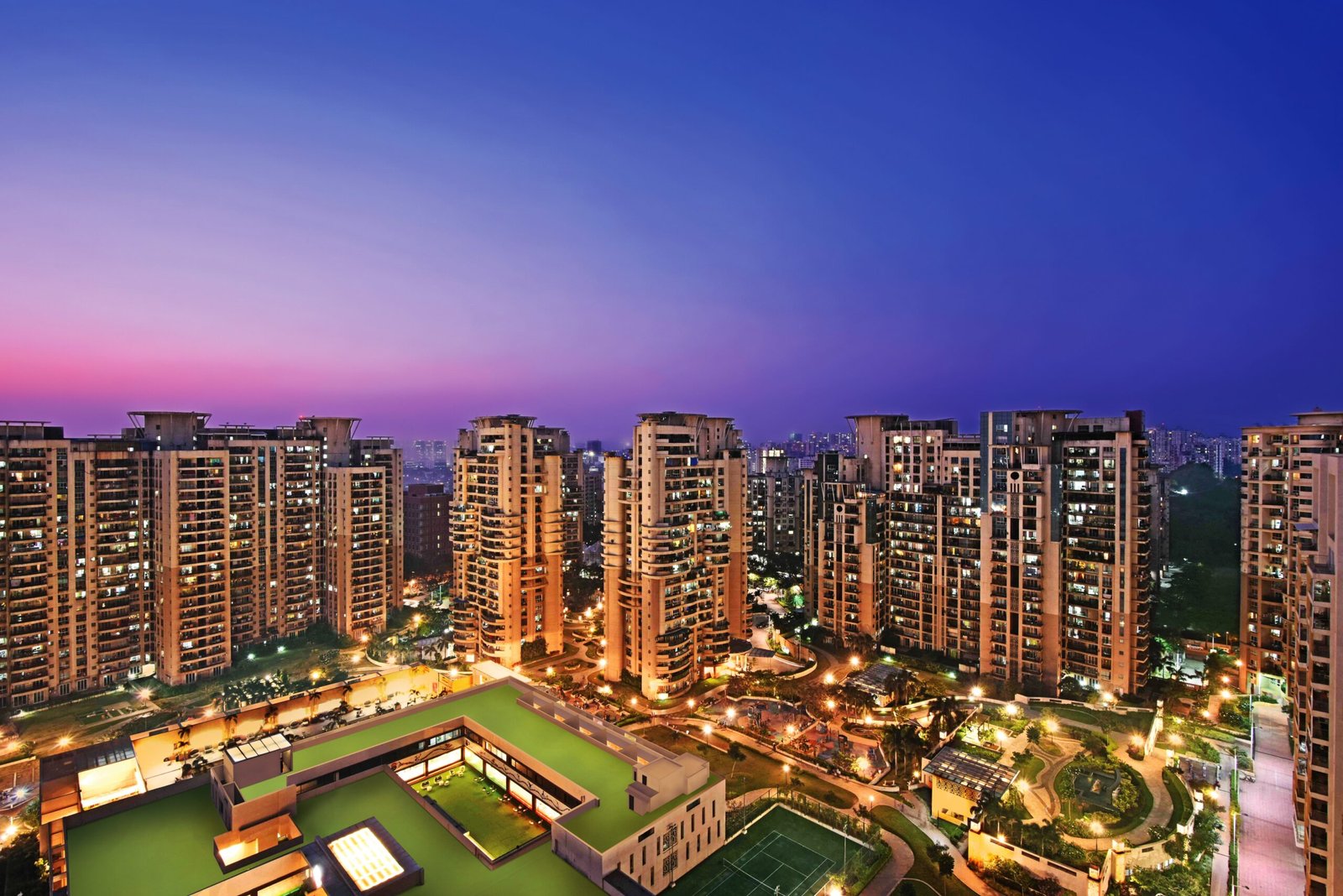Manju Yagnik, Vice Chairperson of Nahar group, believes the real estate industry would further benefit from streamlining and simplifying regulatory difficulties and compliance issues.
By Nichola Marie
The real estate sector in India is seeing an astonishing boom. What is the mood like? Do you foresee long-term growth for the real estate sector? What are the factors powering this growth?
India’s real estate market is now witnessing unprecedented development, and sentiment in the sector is cautiously optimistic. We are observing a nexus of forces that are promoting this expansion and hinting at the possibility of sustainability over the long run. The size of the Indian real estate sector is estimated to jump more than 12-fold to USD 5.8 trillion by 2047 from USD 477 billion last year. It will contribute over 15% to the total economic output of the country, according to the Naredco-Knight Frank report. Factors such as technological disruption and transparent regulatory processes have further increased the confidence level of investors and end customers, which has benefitted the industry in a massive way.
What are some of the trends that are bound to influence the real estate sector in the future?
I believe several important developments will impact the real estate market in the future. First, environment-friendly development methods and sustainability are becoming increasingly important. Demands for more environmentally friendly and energy-efficient buildings are coming from both consumers and authorities. Secondly, customer centricity will take centre stage as developers will invest heavily in technologies which will help them communicate with the customers at every stage of the development. Lastly, as the Indian economy continues to soar, we will witness consistent growth in demand across all verticals, be it luxury, premium, or affordable real estate.
What are your views on the following trends: Digital house hunting, Migration/transition from cities to suburbs, Rise in price of residential properties, Decline in mortgage rates, Decline in the rental property market, Government schemes and offers?
The increasing digital home search trend brings convenience and efficiency to potential buyers. Digital platforms and virtual tours enable house research from home, reducing physical visits during the pandemic and expanding our property listings’ global reach. We’re also observing the shift from urban to suburban living, driven by the desire for more space, nature, and a quieter lifestyle. Our company is actively exploring suburban prospects to meet this demand, considering the government’s housing programmes that stimulate affordable housing demand. Such initiatives align with our commitment to providing quality housing solutions and supporting the “Housing for All” initiative.
Can we expect to see an increasing number of homes equipped with solar panels, rainwater harvesting systems, and energyefficient appliances this year? Are developers focussing on using eco-friendly materials in construction to reduce the environmental impact of housing projects?

Anticipated housing trends show a rise in eco-friendly features such as solar panels, rainwater collection systems, and energy-efficient appliances in the coming years. Sustainability and cost reduction are driving forces behind this shift, promoting the adoption of renewable energy and water-saving technologies. Integrating solar panels trims electricity expenses and aids in environmental conservation. Rainwater harvesting systems help preserve water resources, crucial in water-scarce regions. Incorporating energy-efficient designs curbs operational costs and lessens carbon footprints. Additionally, the real estate sector prioritises eco-conscious construction materials to mitigate environmental impact, aligning with global efforts to combat climate change. Nahar Group’s dedication to sustainable practices reflects its commitment to a greener, more sustainable future.
What are some of the current challenges the sector faces, and what is the way forward?
Like all sectors, the real estate sector will likely face short-term hiccups from the volatile geopolitical environment. The recent upheaval in Israel and the previous escalations between Ukraine & Russia do impact the macroeconomics of our country, which further affects the real estate sector. The international conflicts create volatility in the market and inflation figures, thereby escalating interest rates for the end user.
What is your reading of the demand for property in the top metros such as Mumbai, Delhi, and Bangalore?
The growing real estate demand in metro cities of India can be attributed to several key factors. First, rapid urbanization and population growth continue to drive the need for housing and commercial spaces. Second, the emergence of these cities as major hubs for employment opportunities, especially in sectors such as IT, finance, and manufacturing, attracts a significant influx of migrants seeking better career prospects. Third, ongoing infrastructural developments and government initiatives aimed at promoting urban development further contribute to the rising demand. Lastly, the increasing disposable income and changing lifestyles of the middleclass population also play a crucial role in driving the need for modern, well-equipped housing and commercial properties.

With increased investments in Tier 2 and Tier 3 cities, is their value as residential markets grow?
With the government focussing on creating a seamless infrastructure ecosystem connecting metros to small towns, real estate demand across Tier 2 and 3 towns has gradually increased in the past 2-3 years. Going forward, the focus will shift to Tier 2 and 3 towns which have the advantages and development potential to be the next promising destination for the real estate sector. With the country is expected to urbanise rapidly, Tier 2 and 3 markets are ideal market for real estate investments.
What are some of the positive trends in the office space segment across the top cities?
India’s commercial real estate market has shown steady growth, defying the global trend that has been struggling in recent years. Today, India is the world’s fifth-largest economy, paving the way to become the third-largest by 2029. India currently has the world’s youngest working population, which is a significant trend that would positively aid the demand for commercial real estate. Add to that, there are multiple international MNCs and homegrown startups who are actively looking at creating a permanent working space for their employees, which is further pushing up the demand.
Post the pandemic, there is a growing need for health and fitness centers in housing complexes. Demand for open green spaces is growing while swimming pool demand has crashed. How is this need being fulfilled?
Post the pandemic, there has been a definite shift in terms of amenities from the customers. People are now looking at buying homes in well-established townships which gives them access to multiple amenities that can improve the health of their families and loved ones. Our flagship project, Nahar Amrit Shakti, is a 125-acre township which is witnessing a massive spike in demand since we have created a holistic environment with amenities like a swimming pool, running track, open spaces, clubhouse, etc.
Do you see a growing integration of shared office and living spaces, given the hybrid working system? Is there a demand for co-working spaces in residential projects?

The demand for co-working spaces within residential projects has notably increased in recent years. This trend is largely driven by the evolving work culture, which emphasises flexibility and remote work options. Integrating co-working spaces within residential complexes provides residents convenient access to professional environments, fostering collaboration and productivity. Additionally, the rising number of freelancers, entrepreneurs, and remote workers seeking a blend of work-life balance fuels the demand for such integrated facilities. As the need for communal workspaces grows, developers recognise the value of incorporating co-working spaces into residential projects, catering to the shifting preferences of modern professionals.
What are some of the tech advancements that are giving a rebirth to India’s real estate sector?
Technology advancements like online transactions, virtual property tours, and proptech solutions are reviving India’s real estate market and improving the efficiency and transparency of transactions. These technology disruptions are creating absolute convenience for customers who can finish property tours, negotiations, loan applications, etc, all from the comfort of their home.
What is your opinion on the emergence of township projects and ready-to-move-in flats?
The emergence of township projects and ready-to-move-in flats signifies a positive shift in the real estate sector, offering convenience and comprehensive living solutions. Township projects, with their integrated amenities, promote a selfsufficient lifestyle, catering to the evolving needs of urban dwellers. These projects foster community living and provide a range of facilities, including parks, shopping complexes, and educational institutions, enhancing the overall quality of life. Similarly, the demand for ready-to-move-in flats reflects the contemporary buyer’s preference for immediate possession and reduced risks associated with under-construction properties. Both trends indicate the industry’s responsiveness to consumer demands, emphasizing convenience, security, and holistic living experiences.
What are some of the finance schemes available to ease the burden of the buyer?
Several financing options are available to lessen the buyer’s burden, including government incentives and house loans with competitive interest rates. Additionally, developers provide enticing payment options.
Do shed light on your ongoing and future projects Projects that are currently under progress center on affordable and sustainable housing.
Our ongoing projects will continue to give priority to these elements and take advantage of technological breakthroughs to improve the quality of life.
What are some of the latest trends in terms of architecture and design?

The latest architectural and design trends include open floor plans, energyefficient designs, and smart home technology integration. There is also a growing emphasis on green and sustainable architecture.
What are the current preferences?
Modern real estate preferences include access to inexpensive, roomy homes, close accessibility to necessary services and workplaces, and modern conveniences like gyms, green areas, and co-working spaces. Features that combine technology and are sustainable are also highly desired.











